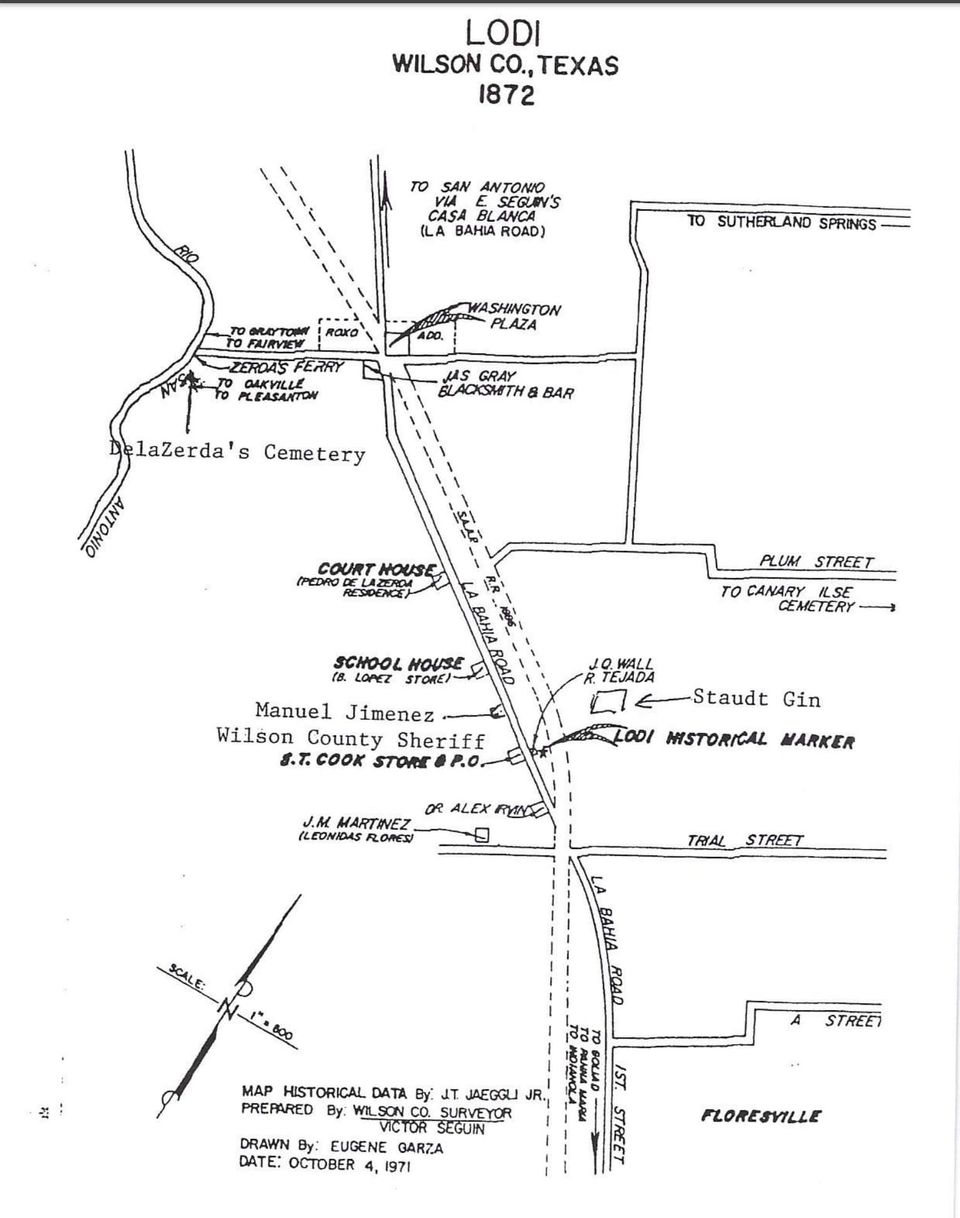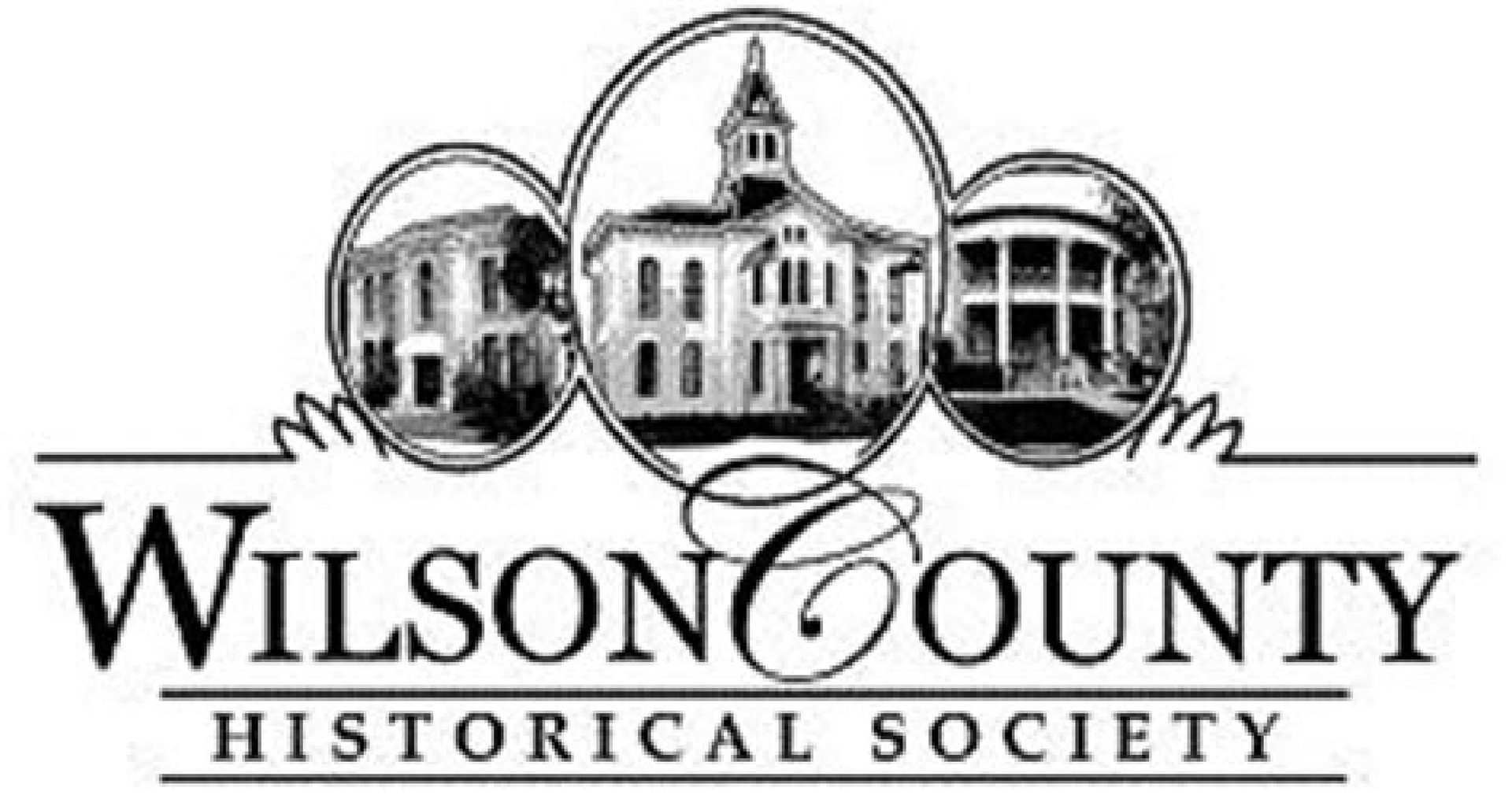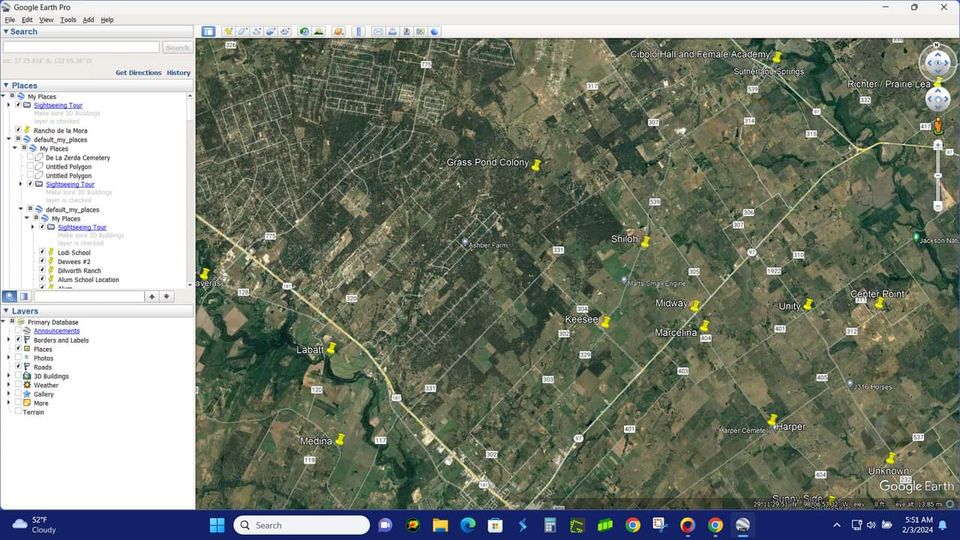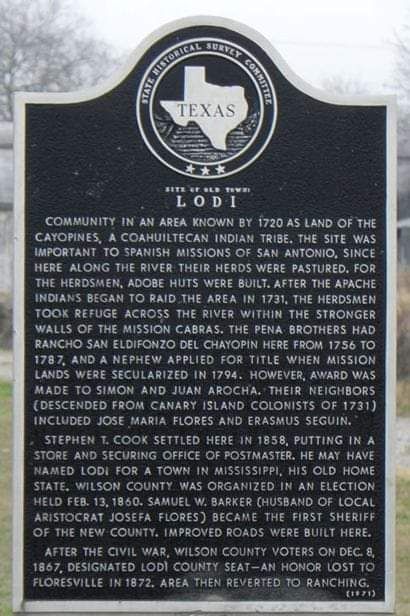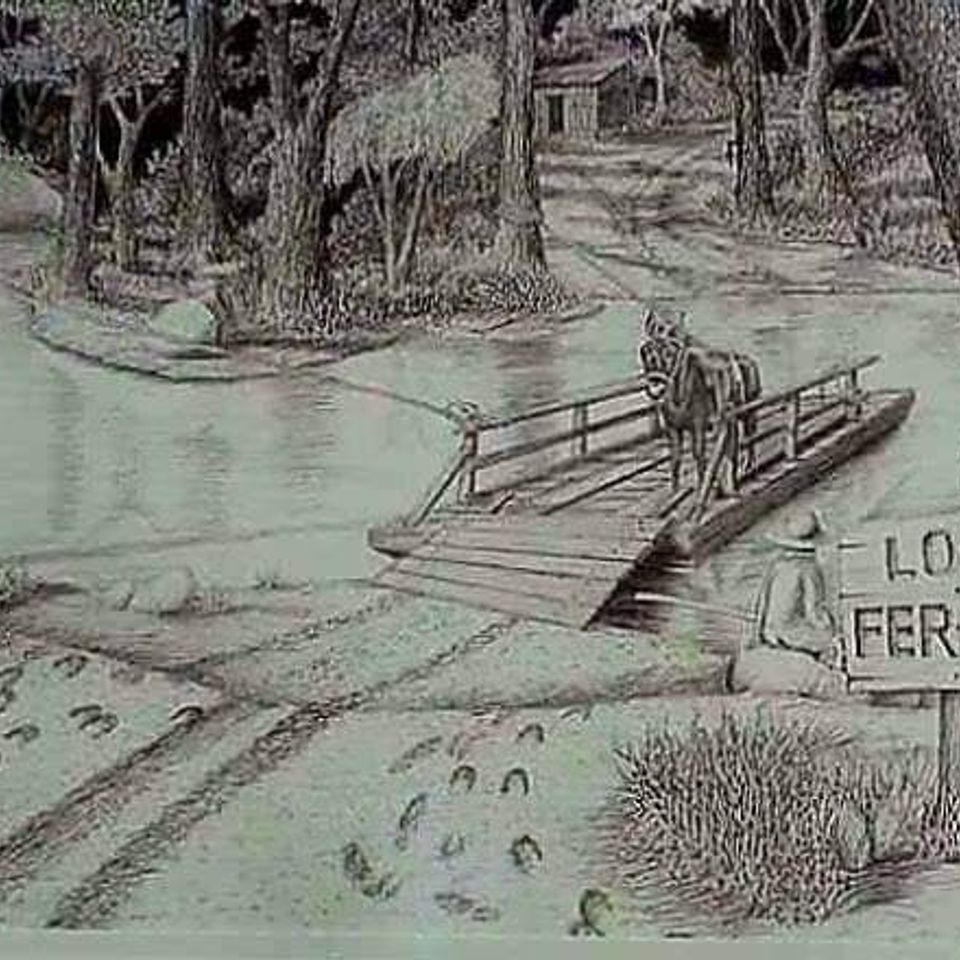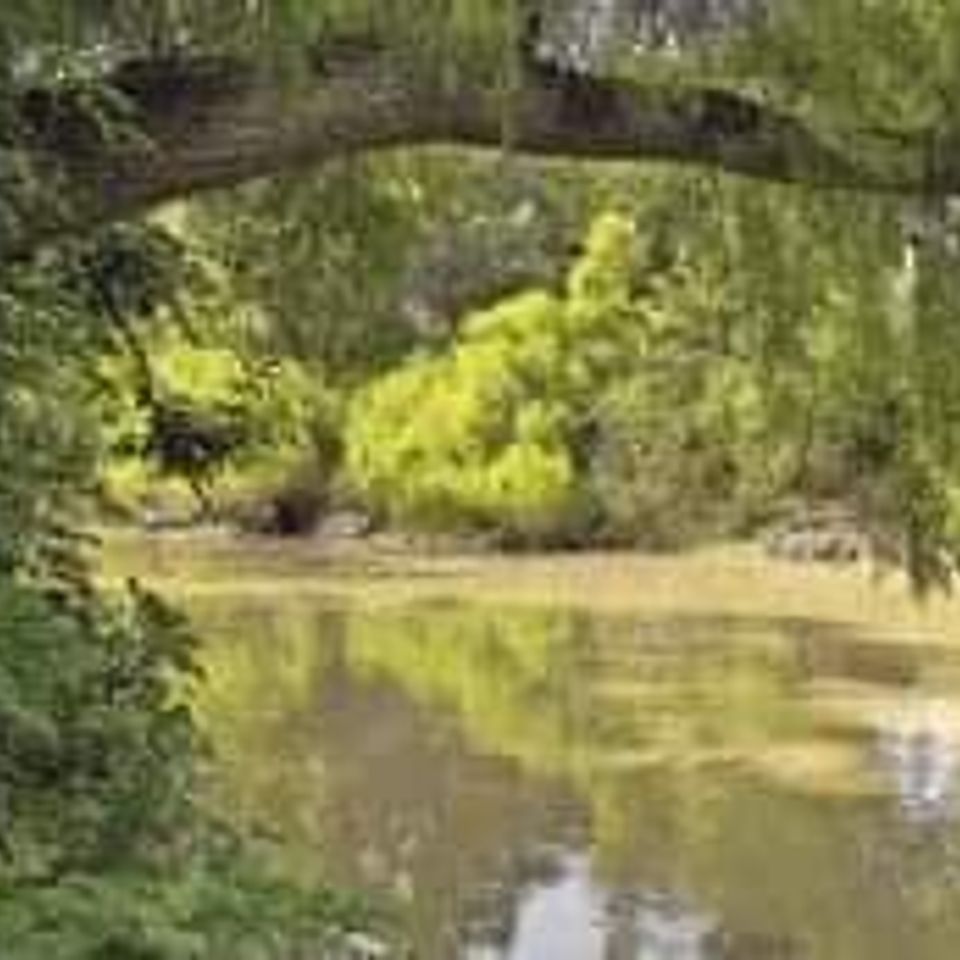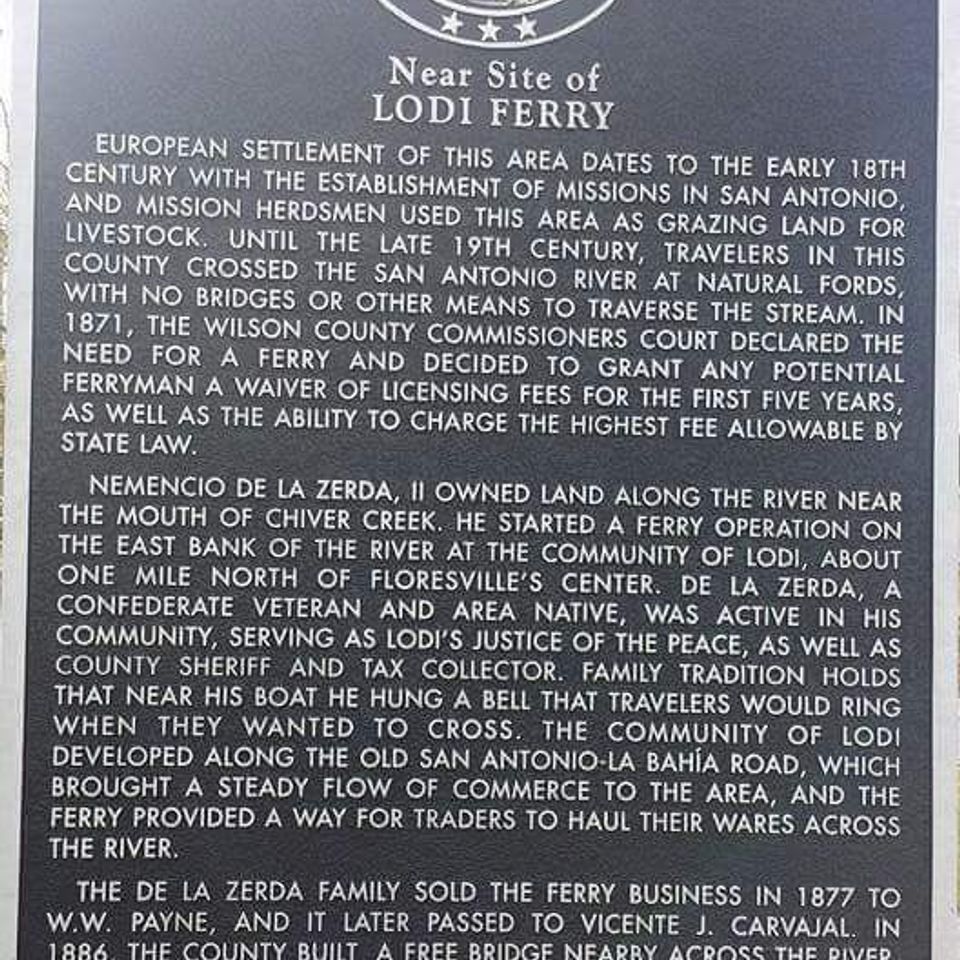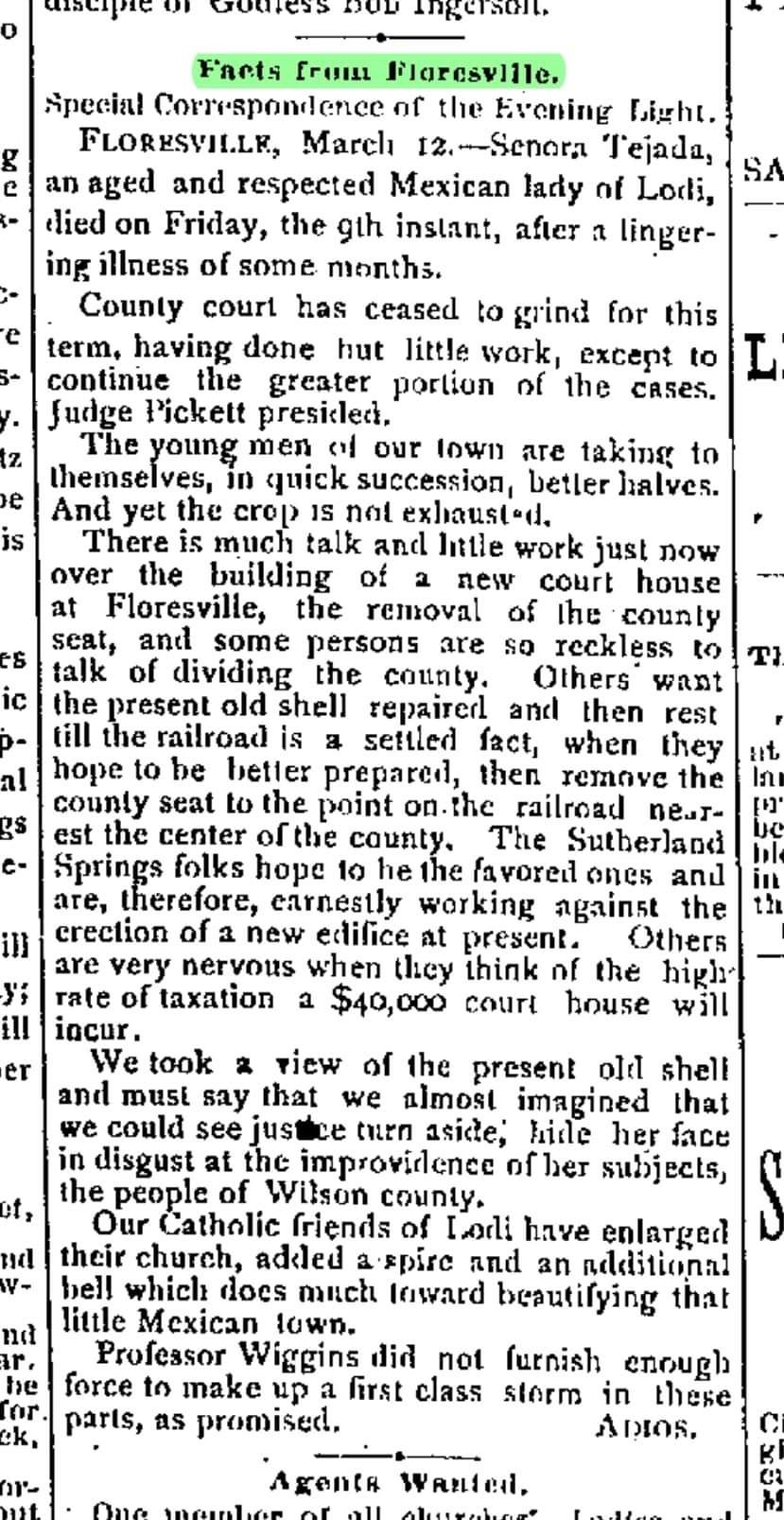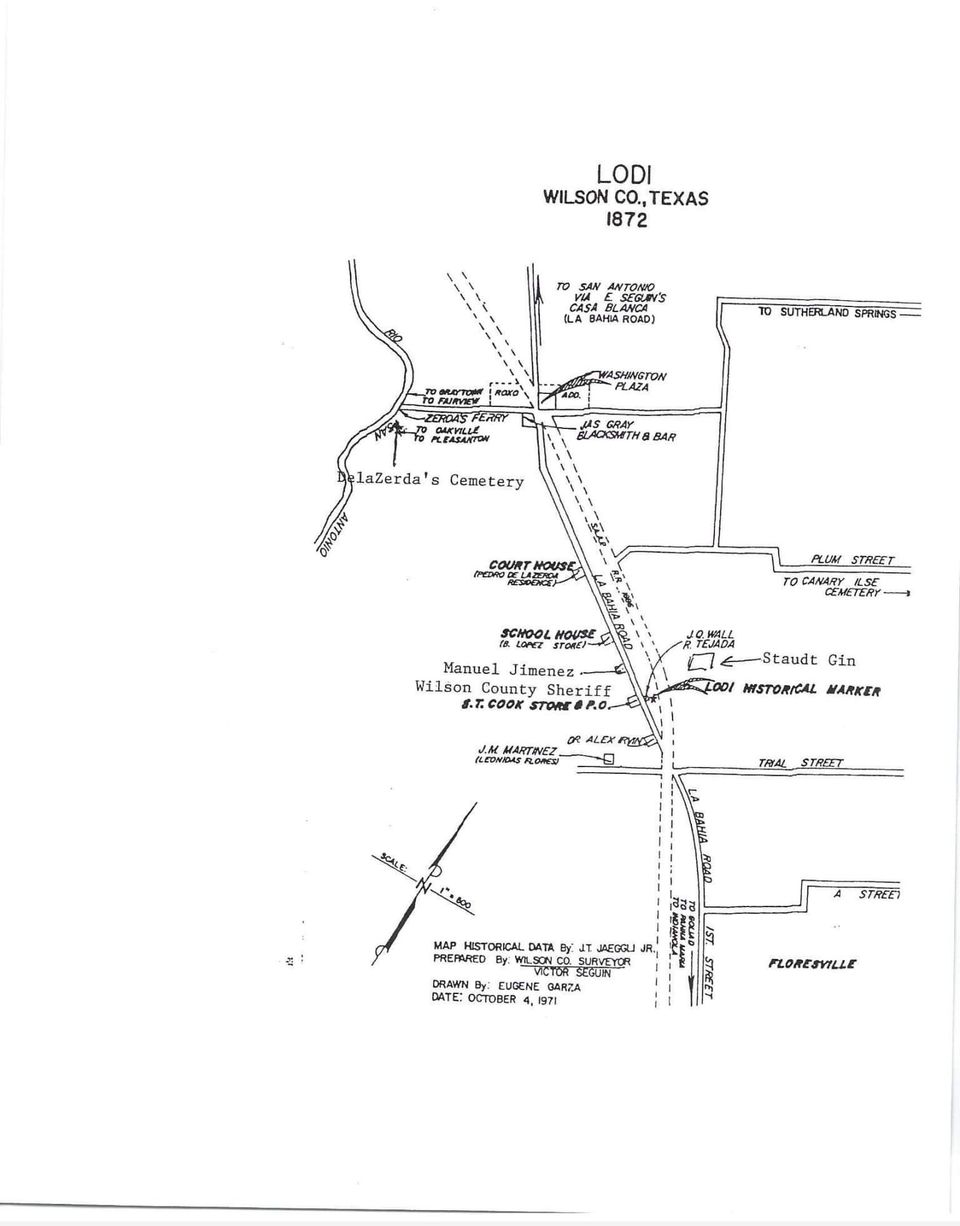The Lodi Ferry in Floresville Texas .... Lodi was located on an old, Spanish land grant on the east side of the San Antonio River. The Spanish government granted Juan and Simon Arocha eight leagues (35,427.2 acres) of land in 1782.
The San Antonio and La Bah'a Road stretched its way through the area that would become Lodi. Crossing rivers and streams was a complex problem for American settlers before permanent bridges were built. The ferry served the public as a convenient means to transport people, animals, and goods across rivers and streams.
In September of 1871, Wilson County expressed its need for a ferry when the issue of roads, bridges, and ferries came up before the Wilson County Comm-issioners Court. The court acknowledged that there were no ferries or bridges on the San Antonio River for the entire length of the county. Like the rest of Texas, the county was still suffering from the effects of the Civil War and the Reconstruction period.
Wilson County needed a ferry, but the court believed that there would not be enough ferry traffic to induce a ferryman to establish a substantial business on the San Antonio River.
The court decided to offer incentives to a ferryman willing to undertake the business. He could keep and run a ferryboat without the requirement of a license or levy of a county tax. The ferryman could charge the highest rate for fare as was allowed by law. These privileges would be guaranteed for five years beginning Jan 1, 1872. This was guaranteed to any person operating a ferryboat at any point between the mouth of Chiver Creek and the ranch of the late Mrs. Leonides Segu'n Flores.
Before long, the challenge to establish a ferry on the San Antonio River was answered. Nemencio de la Zerda II started a ferry service on the east bank of the San Antonio River at Lodi, in Wilson County. It operated one mile above Floresville, the present county seat of Wilson County, and approximately 32 miles southeast of San Antonio. De la Zerda lived near the ferry. Family history and local stories relate that a bell hung on a tree near the ferryboat. When someone wished to cross the river, they rang the bell to summon the ferryman.
Nemencio de la Zerda Sr. and his family lived in the area in the 1850s. The Flores family, after which Floresville was named, had a ranch a little below de la Zerda's property. Erasmo Segu'n, father of Juan Segu'n, lived a few miles north of de la Zerda.
The ranch compound of Rancho de las Cabras was downriver from Lodi on the west side of the San Antonio River. Sixteen families from the villa of San Antonio appear to have moved into the area in about 1854.
The San Antonio and La Bah'a Road brought many travelers through Lodi. There was a procession of wagons, ox carts and people on horseback and on foot moving along this old road. People traded in Lodi. S.T. Cook started a mercantile store there in 1858. A post office was in his store. James Gray established a blacksmith shop and a bar in 1873. Influential people moved into Lodi and it became a community with an international flavor. While the people were predominately Spanish, some of the settlers were descended from French, Polish, German, and Scottish ancestors.
Prior to the launching of the ferryboat on the San Antonio River, people could cross the river at natural fords when the water was low. However, they could not take wagons and carts from one side of the river to the other. The San Antonio River was a barrier to trade between communities. There was a need to wed the east side of the San Antonio River with the west side.
The Lodi ferryboat made its maiden run across the San Antonio River and removed the barrier. Roads were linked up between the west and east, and a spark of economic growth followed. The ferryboat had a positive impact on the area and Lodi became a crossroads community.
Benito Lopez established a store and a school on the San Antonio and La Bah'a Road in 1887. Charles Fischer had a cotton gin there in 1886, and a brick kiln was established. Other businesses followed. Juan Jose de la Zerda and his wife donated land for a Catholic church near Goliad Road in 1886. A priest from Graytown found that the ferryboat was an easy way to cross the river and visit his flock in Lodi.
In 1871 the Wilson County Commissioners Court believed that a ferryman would have difficulty finding enough business to operate a ferryboat on the San Antonio River in Wilson County. However, by 1877, the ferry business must have been lucrative because the court required ferrymen operating in Wilson County to execute a bond in the sum of $1,000. This was big money for the time.
Although the Lodi ferry is no longer in existence, the writers of the dusty pages of the Wilson County Comm-issioners Court minutes, deed records, and ferry charters have helped to resurrect images of the ferry. From these sources and pictures of other ferryboats, we can learn what the Lodi ferry may have looked like and how it operated.
It was probably a flat, barge-like boat. It could have measured 40 feet long and 15 feet wide. A wagon or cart could be driven onto it from an inclined riverbank. A cable would be stretched across the river from one bank to the other to guide the ferryboat. It was pulled across the river with rope and tackle.
Sometimes, it would be necessary to use mules or oxen to pull heavy loads. A toll was charged ranging from 5 cents for foot passengers to 25 cents for a wagon and team.
Floresville started building the present Wilson County Courthouse in 1883. The San Antonio and Aransas Pass Railroad Co. laid track through the area in 1886. Floresville began to grow, and trade was diverted away from Lodi. Goliad Road, the old San Antonio and La Bah'a Road, is still in the Lodi area.
A hike and bike trail is being routed along the area where the railroad tracks once ran through Floresville and Lodi.
The Lodi ferry business was sold several times. On Nov. 20, 1878, the state of Texas issued a charter of incorporation for the Lodi Ferry and Bridge Co. It is not known how long the Lodi ferry operated. As free bridges were spanned across the San Antonio River, its days were numbered. In the early 1900s, several iron bridges spanned streams in Wilson County. One was located on the San Antonio River near Floresville.
In 1957, a concrete bridge replaced an iron bridge on the river at FM 536.
Today, the people who rode on the ferry are gone, but it is not forgotten. In a time long ago, the Lodi ferry bridged the roads on the west side of the San Antonio River with the east side. It played a pivotal part in river crossing and the economy of the area. It has taken a nostalgic place in the history of Wilson County and the surrounding areas.
**********
COURTESY / Ricardo Rodriguez
{Gene Maeckel is a historian and resident of Wilson County. Maurine Liles is an author, historian , and resident of Wilson County.} This article previously ran in SARA's River Reach newsletter & printed in the Wilson County News.
